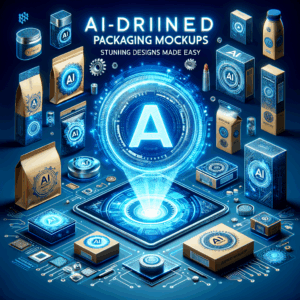
AI Transforms Brand Storytelling: Stunning Success Ahead
- Understanding the Power of AI in Brand Storytelling
- How AI Changes the Game
- Personalization at Scale
- Enhanced Customer Understanding
- The Role of Chatbots in Storytelling
- Consistency Across Channels
- Predictive Analysis for Future Narratives
- Visual Storytelling Enhanced by AI
- Building Community Through AI
- Ethical Considerations in AI Storytelling
- Future Trends in AI-Driven Brand Storytelling
- Conclusion: Preparing for Stunning Success
- FAQs
- References
Understanding the Power of AI in Brand Storytelling
In the ever-evolving digital landscape, brand storytelling has become crucial for companies aiming to stand out. Consumers crave authentic narratives that resonate with their experiences. Yet, traditional storytelling methods often struggle to keep up with the fast-paced, data-driven world we live in. This is where Artificial Intelligence (AI) steps in, transforming how brands tell their stories. In this article, we’ll explore how AI is reshaping brand narratives and paving the way for stunning success.
How AI Changes the Game
Artificial Intelligence changes the conversation around storytelling. It offers innovative tools that allow brands to create personalized experiences. For example, machine learning algorithms analyze consumer behavior patterns. They identify preferences and trends, enabling marketers to tailor their messages effectively. By leveraging AI, companies can reach consumers in a more meaningful way.
Moreover, AI streamlines the content creation process. Advanced tools can generate written content, create visuals, and even curate video material. This efficiency allows brands to react quickly to market changes. In today’s world, agility is essential for capturing audience attention. Brand stories that resonate are often those that adapt quickly to cultural shifts and consumer needs.
Personalization at Scale
One significant advantage of AI is its ability to personalize content on a massive scale. Traditional storytelling often fails to engage a diverse audience. AI solves this by analyzing user data to craft individual narratives. This personalized approach enhances customer engagement and loyalty.
For instance, Netflix utilizes AI to recommend shows based on viewing history. This strategy keeps users engaged longer. As they see tailored content, they become more likely to subscribe and share their experiences. Brands across various industries can replicate this model.
1. Use Customer Data: By aggregating customer data, brands can understand preferences.
2. Segment Audiences: AI allows for effective audience segmentation.
3. Create Tailored Content: Personalized messaging boosts engagement rates.
Enhanced Customer Understanding
AI technologies deeply enhance how brands understand their customers. With predictive analytics, companies can foresee what consumers want even before they articulate it. Machine learning tools analyze vast amounts of data. This helps marketers create emotional connections with their audiences.
Understanding customer sentiment is another aspect where AI shines. Through natural language processing (NLP), brands can analyze social media interactions, reviews, and surveys. This insight helps refine brand narratives, ensuring they resonate with readers.
The Role of Chatbots in Storytelling
Chatbots may seem like a mundane application of AI, but they are revolutionizing brand storytelling. They provide real-time interactions with customers, engaging them in meaningful conversations. Chatbots can answer questions, share brand history, and guide users through buying processes.
For example, a fashion brand can use a chatbot to recommend outfits based on user queries or offer styling tips. This interaction fosters a personal touch, making customers feel valued. Ultimately, this adds layers to the brand story, creating a more immersive experience.
Consistency Across Channels
Consistency is key when narrating a brand story. Customers interact with brands through various channels—social media, websites, and email. AI helps ensure that the brand message remains coherent and compelling across platforms.
With AI-driven content management systems, brands can maintain a unified voice. These systems analyze the effectiveness of messages across different channels. Adjustments can be made swiftly based on real-time feedback. This level of adaptability strengthens brand narratives, resulting in a cohesive story.
Predictive Analysis for Future Narratives
AI’s predictive capabilities are a game-changer for future storytelling. By analyzing past performance data, brands can identify which narratives resonate most with audiences. This insight guides content planning and strategy.
For instance, a technology startup could examine user engagement metrics over the last year. Based on this data, they may decide to focus more on innovation and customer testimonials in their upcoming campaigns. This approach allows brands to make informed decisions, steering them toward greater success.
Visual Storytelling Enhanced by AI
Visual content often captures attention more effectively than text alone. AI tools can enhance visual storytelling by optimizing images and videos for various platforms. These tools analyze data points like engagement rates and audience preferences, ensuring that visuals resonate with viewers.
Moreover, AI-generated art and graphics allow brands to explore unique creative avenues. Companies can experiment with styles and formats without extensive resources. This capability opens the door to innovative storytelling approaches that captivate audiences.
Building Community Through AI
Brand storytelling is not just about the brand; it’s also about the community. AI helps brands engage their audience and build a community around their narratives. By using social listening tools, brands can monitor conversations and feedback in real time. This ensures that they remain connected to their audience’s thoughts and feelings.
Creating user-generated content initiatives is another effective strategy. Brands can encourage customers to share their own stories. This approach deepens emotional connections and broadens the brand narrative. When consumers feel part of the story, their loyalty strengthens.
Ethical Considerations in AI Storytelling
As AI takes center stage in brand storytelling, ethical considerations come to the forefront. Brands must be transparent about how they use consumer data. Building trust is essential for long-term success. Consumers are becoming increasingly aware of data privacy issues, and brands need to respect this.
Moreover, AI algorithms can sometimes amplify biases present in data. Brands must be vigilant about this issue, ensuring that narratives are inclusive and representative. Awareness and action regarding these ethical aspects can enhance a brand’s reputation and build further trust with consumers.
Future Trends in AI-Driven Brand Storytelling
The future of brand storytelling with AI looks promising. Emerging technologies like augmented reality (AR) and virtual reality (VR) offer exciting storytelling possibilities. These technologies allow brands to immerse their audiences in their narratives effectively.
Additionally, advancements in AI will facilitate even deeper personalization. As algorithms become more sophisticated, brands will be able to create hyper-personalized experiences.
1. Focus on Immersive Experiences: Brands may adopt AR and VR to engage customers.
2. Enhanced Data Use: Greater data analytics will allow for deeper audience segmentation.
3. Real-time Content Creation: Brands may benefit from instant content generation powered by AI.
Conclusion: Preparing for Stunning Success
AI transforms brand storytelling, offering tremendous potential for companies looking to excel. By leveraging data-driven insights, brands can tell compelling narratives that resonate with their target audience. Personalized content, real-time interactions, and ethical considerations will shape the future of storytelling.
Embracing AI is not just about keeping up with trends; it’s about thriving in a competitive landscape. Brands willing to innovate with AI will likely find themselves achieving stunning success in their storytelling efforts.
FAQs
1. What is AI-driven brand storytelling?
AI-driven brand storytelling employs artificial intelligence tools to create personalized narratives, enhance customer understanding, and streamline content creation.
2. How can AI personalize brand narratives?
AI analyzes consumer behavior data, enabling brands to tailor their stories to individual preferences and enhance engagement.
3. What role do chatbots play in storytelling?
Chatbots provide real-time interactions, engage customers, and offer tailored recommendations, enhancing the storytelling experience.
4. How does AI improve visual storytelling?
AI optimizes images and videos for different platforms and generates unique visuals, enhancing the creative process.
5. What ethical considerations should brands keep in mind when using AI?
Brands must be transparent about data usage and ensure that their narratives are inclusive and free from bias.
6. Can AI help brands adapt to cultural shifts?
Yes, AI’s real-time analytics allow brands to adjust their narratives based on changing cultural dynamics quickly.
7. How does AI enhance customer understanding?
AI tools analyze sentiment and feedback, allowing brands to create emotional connections.
8. What future trends should brands watch for?
Brands should keep an eye on augmented reality, deeper personalization, and real-time content generation.
9. Is AI storytelling only for large brands?
No, businesses of all sizes can benefit from AI-driven storytelling tools and strategies.
10. How can companies start integrating AI into their storytelling efforts?
Companies can begin by analyzing customer data, experimenting with AI tools, and focusing on personalized content generation.
References
– Forbes on AI in Marketing
– Harvard Business Review: The State of AI
– McKinsey: AI in Marketing
By leveraging these insights, brands can navigate the changing landscape of storytelling and achieve remarkable results.

